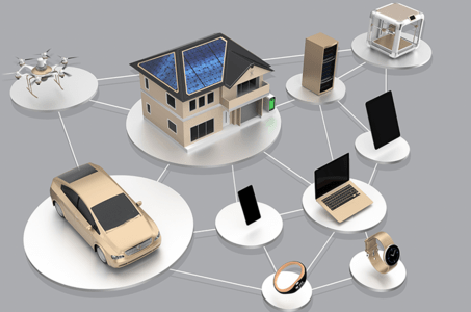Description

Disclaimer: Copyright infringement not intended
Context
- There have been good achievements made under National Mission on Interdisciplinary Cyber Physical Systems. The mission has been able to develop as many as 660 technologies, 1468 entrepreneurships, 3145 human resources and initiated 35 international collaborations - Ministry of Science and Technology and Earth Sciences.
Cyber Physical system
- Cyber Physical system (CPS) is a new generation of digital systems, composed of computational and physical capability that engages with humans like never before. It's designed to act like a network of multiple variables with both physical input and output – rather than standalone technology.
- Cyber-physical systems integrate sensing, computation, control and networking into physical objects and infrastructure, connecting them to the Internet and to each other.
- Examples of CPS include smart grid, autonomous automobile systems, medical monitoring, industrial control systems, robotics systems, and automatic pilot avionics.
- Cyber-physical systems can be applied in areas as diverse as aerospace, automotive, chemical processes, civil infrastructure, energy, healthcare, manufacturing, transportation, entertainment, and consumer appliances.
|
A real-world example of CPS is the Distributed Robot Garden at MIT in which a team of robots tend a garden of tomato plants. This system combines distributed sensing (each plant is equipped with a sensor node monitoring its status), navigation, manipulation and wireless networking.
|
- This ability to interact and communicate, by expanding the capabilities of the physical world through computation, is a major step for future technology.
National Mission on Interdisciplinary Cyber Physical Systems (NM-ICPS)
- To harness the potential of this new wave of technology and make India a leading player in CPS, the Union Cabinet approved the launch of National Mission on Interdisciplinary Cyber-Physical Systems (NM-ICPS) in 2018.
- It is to be implemented by the Department of Science & Technology (DST) with a total outlay of Rs. 3660 Crore for a period of five years.
Aim
- The Mission aims to create a strong foundation and a seamless ecosystem for CPS technologies by coordinating and integrating nationwide efforts encompassing
- knowledge generation,
- human resource development,
- research, technology and product development,
- innovation and commercialization.
Implementation
- The mission is being implemented through a network of 15 Technology Innovation Hubs (TIHs), 6 Sectoral Application Hubs (SAHs) and 4 Technology Translation Research Parks (TTRPs).
- Each hubs and technology parks will follow a technology life cycle approach, addressing all stages viz.
Domain areas:
- Artificial Intelligence and Machine Learning
- Technologies for Internet of Things and Everything (IOT & IOE), Sensors, Activators and Control
- Databanks & Data Services, Data Analytics
- Advanced Communication Systems
- Robotics & Autonomous Systems
- Cyber Security and Cyber Security for Physical Infrastructure
Who can apply?
- Host Institutes shall be reputed academic and R&D institutions.
- Institutions within top 50 overall NIRF ranking are only eligible to apply.
- R&D Institutions that are operating in R&D, technology development, commercialization, etc. in Engineering and Technology areas for at least 10 years and have expertise in CPS foundational technologies are eligible.
Significance
The mission implementation would develop and bring:
- Cyber Physical Systems (CPS) and associated technologies within reach in the country,
- Adoption of CPS technologies to address India specific National / Regional issues,
- Produce Next Generation skilled manpower in CPS,
- Catalyze Translational Research,
- Accelerate entrepreneurship and start-up ecosystem development in CPS,
- Give impetus to advanced research in CPS, Technology development and higher education in Science, Technology and Engineering disciplines, and
- Place India at par with other advanced countries and derive several direct and indirect benefits.
https://www.pib.gov.in/PressReleasePage.aspx?PRID=1806542















